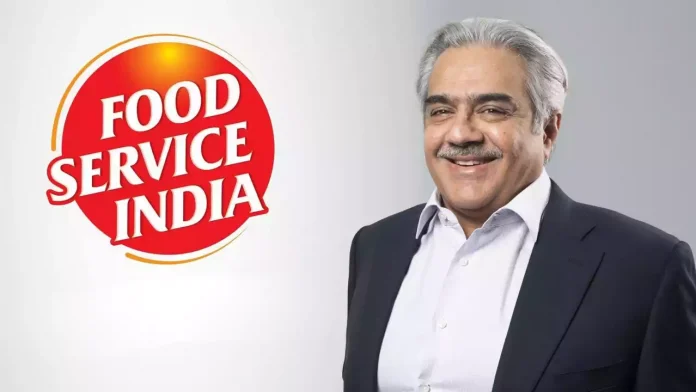Food Service India, a prominent player in the India’s ever-evolving HoReCa (Hotels, Restaurants, Catering) industry, aims for a 25% to 30% growth this year. The company provides an extensive spectrum of products, from gravies, sauces, and seasonings to beverages, canned fruits, vegetables, and pasta, with a portfolio of over 550 SKUs.
Under the leadership of managing director Ajay Mariwala, the company is not only navigating market challenges but also embracing emerging opportunities in Tier 2 and Tier 3 cities, as well as fine dining and catering.
“In the next 6 months, we expect a few key developments. First, we anticipate inflation cooling down a bit, and with a good monsoon, a strong agricultural output. This will improve both supply and demand in rural areas, especially for FMCG products. We believe this will fuel overall demand, and we’re confident of growing by 25-30% this year,” says Mariwala.
Mariwala projects growth coming in from the rural sector. “The next 6 months will largely depend on rural consumption and spending. While we don’t expect major changes in urban demand, the rural sector holds significant promise,”
Mariwala expects to cross INR 300 crore in turnover this year. “Our exit run rate by the end of the FY will be around Rs 400 crore, with annual revenue well over Rs 300 crore,”
The HoReCa (Hotels, Restaurants, and Catering) segment, contributes around 75% of company’s business. The remaining 25% is split between enterprise and international business and e-commerce.
Innovation Across Categories
Speaking on the innovations, Mariwala informs that they have expanded their seasoning offerings with a range of innovative products, such as Middle Eastern options like Mandi, Shawarma, and Alfam seasonings, and a comprehensive selection of Oriental seasonings. “We have also developed Oriental culinary sauces and introduced a range of floral syrups. One of our seasonal promotions includes Modak syrup, which is connected to Ganpati celebrations,”
Beyond that, Food Service has launched sweet and spicy chutney sachets. “We expect significant traction with these sachets. We believe chutney sachets, much like how ketchup sachets became a norm, will see widespread adoption,” he says.
In addition to product innovation, the company is also leveraging tech solutions and advanced data analytics to enhance overall services.
Talking to SnackFax, Mariwala also speaks on his perspective on India’s evolving food service industry.
Growth in HoReCa: A Boon for Food Service Providers
The post-pandemic surge in demand across the hotel sector has created unprecedented opportunities for food service providers. “The hotel sector is seeing a massive tailwind. The speed at which new hotels are being built across metros, Tier 1, and even Tier 2 and Tier 3 cities, as well as holiday resorts and boutique hotels, is remarkable,” notes Mariwala.
Continue Exploring: India’s food services sector poised for rapid growth, set to reach INR 7.76 Lakh Cr by 2028: NRAI Report
For Food Service India, this growth opens new doors across the spectrum of hotel offerings, from mid-range properties with simpler kitchen needs to luxury hotels requiring premium, organic, and imported ingredients. “India will see more seven-star properties emerge. High-end hotels will demand truly authentic and healthy solutions,” he predicts.
The casual dining and fine dining segments have also experienced significant post-COVID growth, with consumers eager to dine out again. Mariwala points to the growing demand for global cuisines: “More Indians are traveling abroad and seeking out international flavors upon their return. Casual dining and fine dining are stepping in to fill that gap.”
QSRs and Catering: A Shifting Landscape
While international Quick Service Restaurants (QSRs) have faced challenges over the past 12-18 months, Mariwala sees this as a period of flux rather than decline. “People are up and down trading. There’s a shift from the big international QSR chains to more value-driven domestic players. But we’re also seeing premium QSR options emerge,” he remarks. The emergence of casual dining options and fine dining has added more complexity, but he remains confident in the resilience of the QSR segment.
He adds, “The trend is shifting horizontally with new cuisines—Indian, Mexican, Chinese—offered by QSRs. Additionally, casual and fine dining is gaining popularity post-COVID, as people want to return to the dining-out experience.”
In the catering industry, the return to office work is driving explosive growth. “Corporate catering has boomed as work-from-home declines. Large domestic and international caterers are experiencing mind-boggling growth in terms of the number of meals they serve,” Mariwala explains.
Continue Exploring: One-third of food outlets in India to be QSRs by 2028: Report
Tier 2 and Tier 3 Cities: Untapped Goldmine
The expansion into Tier 2 and Tier 3 cities has been a significant growth driver for Food Service India. Mariwala is optimistic about the untapped potential in these regions. “These cities are picking up fast. The middle and lower segments in these areas need simple, easy-to-replicate food solutions because of their smaller, less equipped kitchens,” he says.
Food Service India’s vast product portfolio and nationwide distribution network put them in an ideal position to meet this demand.



